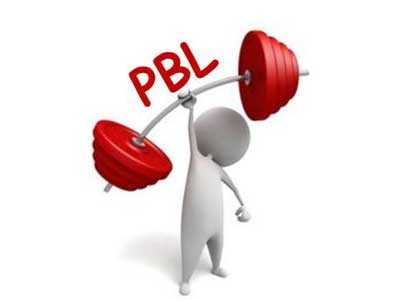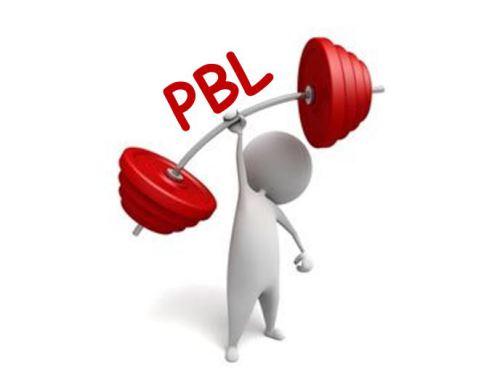Project Based Learning: 5 More Misconceptions and Resources to Raise the PBL Bar, Pt 2


Welcome back…. I had to come up with five more ideas to reflect on as all of you work on incorporating PBL practice in the classroom. It was wonderful seeing all the retweets with over one thousand reads a day from that last PBL post. Before continuing, I would appreciate having you take a moment to subscribe to this Blog by RSS or email and follow me at (mjgormans). Taking that moment ensures that we can continue to network, something that is very magical to me. Also, please share this post with others and even provide a re-tweet. Last, please check my Booking Page to see how I could be part of your school PD or Conference plans. – Mike Gorman (https://21centuryedtech.wordpress.com/)
Pt 2: Project Based Learning … 5 More Misconceptions: Plus… 5 More Resources to Raise the PBL Bar
In the last post, I pointed out five areas of misconception as to what Project Based Learning really is. Those ideas included:
- I already do PBL by incorporating a project at the end of the unit for learning.
- I tried PBL and I just did not have time to cover the standards.
- The problem with PBL is that projects cannot teach the standards.
- My students just cannot get engaged in PBL.
- I don’t think I can replace traditional teaching with PBL
You can review these ideas and resources at this link. I have another five PBL ideas I know you will want to take a look at below. Keep in mind that I look forward to the possibility of working with you to bring “Real PBL” to your school! Please enjoy the read and share with others.
- Projects in PBL last too long – This can actually be true! On the other hand, there is no rule that states that projects have to go week in and week out. They can actually be as short as a couple days. In fact, when starting out, I suggest that teachers begin their adventure with smaller projects. Watch for jumping into a project with too many ideas and the over planning that comes with this. Make sure that the project is based on standards and these standards are carefully aligned from the opening entry event to final assessment. Do not spend significantly more time on a project than might be used in the traditional delivery. If there is the temptation to grow the project, make sure that additional standards are part of the growth. Discover more about project length from Al Solis at this wonderful post on PBL timing.
- I cannot design cross-curricular projects because I only teach one subject. – Keep in mind that PBL does not have to cross disciplines, nor does it require teaming. PBL can be part of a single subject classroom. In fact, I often suggest keeping it to one discipline for teachers first starting the PBL path. It is much easier since one can plan on their own and teaming does not have to occur. If possible and appropriate, it is always helpful to show some of the obvious connections to other disciplines and the outside world. If a group of teachers wants to cross curriculums it is important to make the cross meaningful. It is essential to realize the difference between Interdisciplinary and Transdisciplinary Learning. Transdisciplinary uses a PBL approach by providing a driving question that is answered through multidisciplinary studies. This is an amazing approach and a powerful final goal as schools reform pedagogy, learning spaces, and daily schedule. Take a look at this video from the School for Tomorrow to learn more about a Transdisciplinary approach.While it is important to make connections outside of one curriculum, as a teacher learns PBL this can be done within the constraints of a single classroom. As teachers become proficient with the process there will be a natural desire to take the next step as both an individual and a group of educators in a building.
- I cannot fill my year with PBL – A year does not have to be filled with PBL, although lessons should begin to take on and reflect a few of the Gold Standards. There are some schools that are built on a total PBL culture, and because of that will have projects from the start to the finish of a school year. Read more about the New Tech Model which incorporates a whole school PBL approach.On the other hand, many schools have teachers practicing PBL and may not see this practice as “door to door” PBL all year. In a traditional school setting, I suggest teachers try possibly one or two projects the first year they try to extend their teaching into a PBL environment. It is important to take small steps and to not feel that these projects have to be large. It may take a while to feel comfortable in handing the control and responsibility of learning to the students. There may even be a need to check student understanding and learning through traditional means. Understand that students are also experiencing a change and could feel some frustration and uneasy feelings as they progress. As a classroom enters a PBL culture there will be a new understanding involving the learning that takes place, even if students are not part of a project every day. The individual elements of PBL will begin to take hold throughout the daily learning experience.
- Our school does not have the technology to support PBL – I think it is important to define technology before going any further. Many educators think that the introduction of digital technology with computers and devices began the idea of technology integration in the classroom. We must all be reminded that technology represents the tools for doing! Students have been “doing” in various classrooms throughout and beyond the past one hundred years. They have been using tools such as pencils, paint, markers, rulers, compasses, and so much more. If one looks at the era of Dewey it is apparent that PBL was being incorporated long before the first digital device. I often remind teachers that allowing students to make and create does not necessitate digital technology. What is necessary is for a teacher to understand that real learning and understanding demands that students be a part of an active learning experience where they have a sense of ownership. Keep in mind that today’s digital technology allows for an amplification of this learning experience. It promotes new possibilities and avenues never before available. With this in mind, it must be understood that rich and powerful PBL is, and always has been possible without digital technology. You can learn more at my past article linking four technology indicators to PBL.
- PBL does not provide the rigor students need in order to be college and career ready – From my experience, I have actually found the contrary. Rigor should not be defined as “more work”, but instead should involve work that incorporates deep and engaged learning opportunities. Often, true rigor can be difficult to incorporate without authenticity and true student buy-in. Watch students in a classroom that are truly in the “flow of learning” and you will also find rigor. With rigor comes perseverance, student self-regulation, passion, and a deeper understanding of the content. As students are engaged in projects, the never ending inquiry and the sense of creating and solving with a real purpose develops a culture that promotes a drive for success. Perhaps we also need to look at the idea of “College and Career” ready. I think it should be stated the opposite…. “Career and College” ready. If we start thinking of career possibilities, the important 21st-century skills become more apparent. PBL often allows students to discover their passion. This newly found passion will produce a rigor that drives and prepares students for next path, whether it be college or a different amazing post K12 experience. Take a moment to explore this article on rigor from Edutopia. As rigor is truly defined, one can see that PBL is a perfect fit.
Once again you can see, it might just take a few tweaks to do PBL well! Enjoy the links and discover ways to connect even more to Project Based Learning. As you begin the process, take small steps. Projects do not have to go week in and week out. They can actually be a short as a couple days. Keep in mind that PBL does not have to cross disciplines although transdisciplinary projects can be powerful. A year does not have to be filled with PBL, although lessons should begin to take on and reflect a few of the Gold Standards. Allowing students to do… demands the use of technology, although it does not have to be digital. PBL promotes student-centered learning, that allows for passion, which plants the seed for rigor. I will highlight some of these ideas plus more in some upcoming posts.
cross-posted at 21centuryedtech.wordpress.com
Michael Gorman oversees one-to-one laptop programs and digital professional development for Southwest Allen County Schools near Fort Wayne, Indiana. He is a consultant for Discovery Education, ISTE, My Big Campus, and November Learning and is on the National Faculty for The Buck Institute for Education. His awards include district Teacher of the Year, Indiana STEM Educator of the Year and Microsoft’s 365 Global Education Hero. Read more at 21centuryedtech.wordpress.com.
Tools and ideas to transform education. Sign up below.
